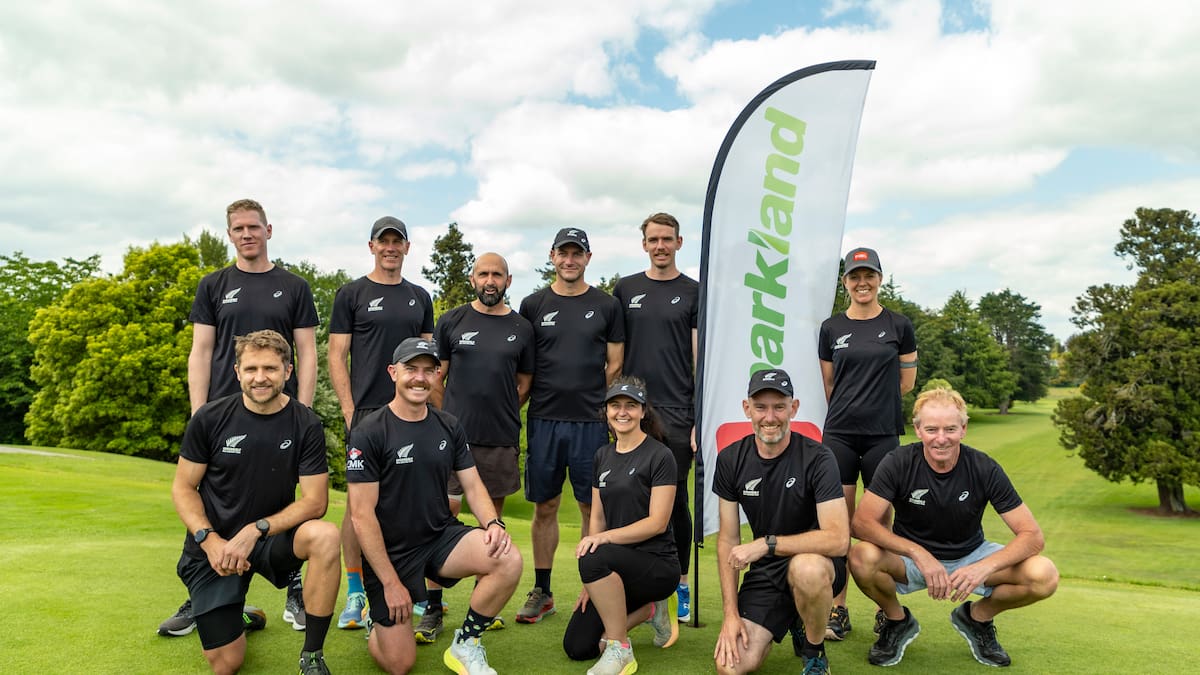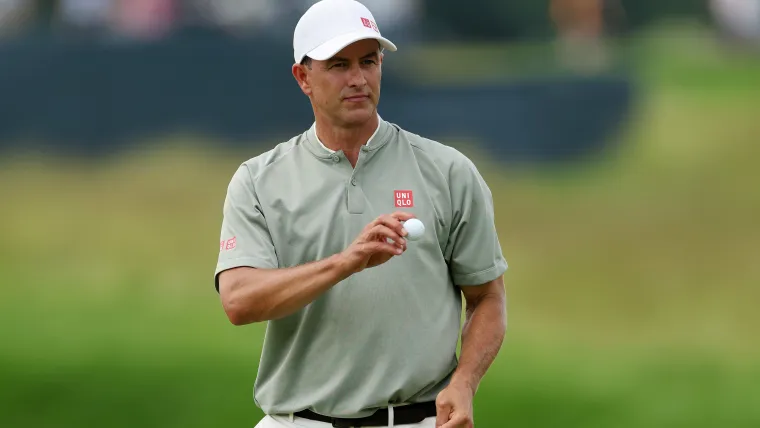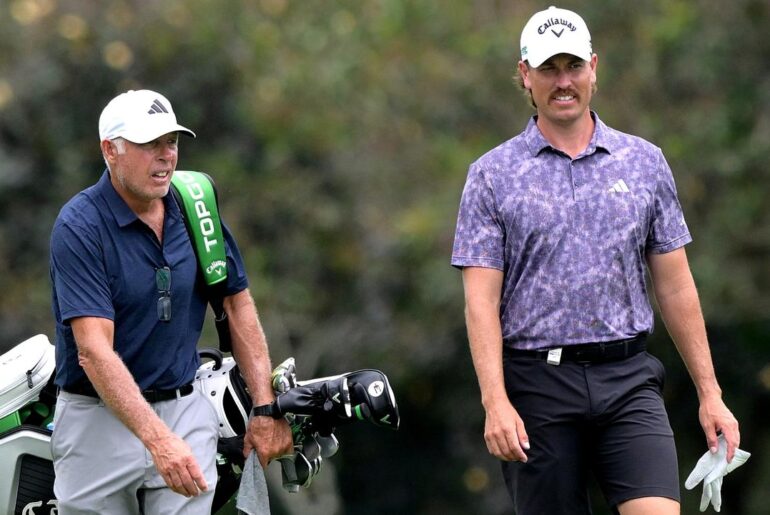“It’s very much the golf side [the practice rounds], confirming club selection, confirming your targets off the tees, confirming your targets on the green irrespective of where the pin is. The big one is a lot of us will run with a watch that will record our golf stats rather than our GPS for distance … you’re not able to record your heart rate and running stats and do your golf distances at the same time. Most of us record our running stats, so we are literally learning to eyeball to judge distance.”
Judging distance is essential in regular golf and speedgolf, but time is of the essence in the faster version and there is no time to pull out a rangefinder, so these practice sessions are the only chance for competitors to gauge approach distances before the tournament begins.
Speedgolf New Zealand team before leaving for Japan for the world championships are (back from left) Brad Dippie, Bernie Smith, Damian Mills, Craig Russell, Jamie Reid and Liz McKinnon; (front from left) Mick McBeth, Robin Smith, Amy Linton, John Farron and Pete Sharlott. Photo / Alex Cairns
“It’s really being able to take note of what the hole looks like, so that I can keep playing it over in my mind. Because you need to be able to remember that hole, you don’t have time to think … You need to be a bit focused on the bigger picture,” says McKinnon.
AdvertisementAdvertise with NZME.
Speedgolf tournaments are therefore a balancing act between preparation and instinct because even the best-laid plans can come unstuck when the pressure mounts.
Dealing with that pressure is something McKinnon says can be learned only during competitions, and keeping things simple and tempering expectations are valuable tools to combat nerves.
“The key to speedgolf is keeping it simple. Keep the ball in play, try to get on the green, that’s what all golfers are trying to do – get the ball in the hole. The big one is minimising errors, so that pars are solid, nothing worse than a bogey. I think people’s expectation in slow golf is that they’re going to make quite a few birdies whereas we know we’re not going to.”
McKinnon’s partner for the teams event is Amy Linton and the pair are part of a 14-strong women’s contingent, which is believed to be the most female representation at any speedgolf tournament so far.
Discover more
This year’s world championships are set to be the most competitive yet, with the world’s top players all able to make their way to Japan. McKinnon says this means any success at the tournament for the New Zealand team will be a true indication the Kiwis are up there with the best.
“I know that I’m fit enough, it’s golf. I’ve got lots of speedgolf rounds in my pocket and it’s all pretty solid, so it’s really being able to pull it together on the day but not allow the nerves to get the better [of me]. The nerves are going to mean I care, but just being able to accept it and move through it.”
Speedgolf World Championships
Where: Seven Hundred Club, Sakura-shi Tochigi, Japan
When: November 14-15
Will Toogood is an online sports editor and golf reporter for the NZ Herald. He enjoys watching people chase a ball around on a grass surface so much, he decided to make a living out of it.







